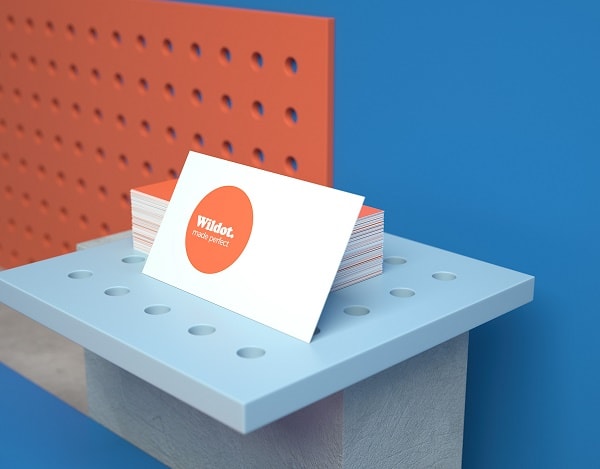#Sponsored
When you think of successful business brands, you probably think of big names like Apple, Coca-Cola or Disney. But you don’t have to be a mega-corporation with a mega-budget to create a successful brand image. To create a brand that makes an impact, just follow these three steps.
Step 1: Brainstorm your brand identity
You don’t need a big advertising agency to help you create a brand. Nobody knows your small business like you do, so you are uniquely qualified to brand your business. Start by brainstorming answers to the following questions:
- What is your business’s mission? What do you want to accomplish for your customers?
- What is your unique selling proposition (USP) or the unique value that you add for your customers that none of your competitors do?
- How does your product or service benefit your customers? (For example, does it make their lives easier, help them save money, or save them time?)
- If your business were a person, what personality would it have? (It might be hip, intellectual, fun or earnest.)
- What is your vision for your business (your ultimate goal)?
Writing down your answers to these questions will help you envision a brand for your business.
As you brainstorm, keep your competition in mind. While you don’t want your business to be a clone of your competitors, you do need to be aware of their branding. Looking at how other companies in your industry brand themselves can help you create a brand that stands out. If everyone else in your industry uses green, for example, maybe you should use blue.
At the same time, you don’t want to stray too far from the accepted approach to branding in your industry. For example, a children’s clothing company could take a lighthearted, colorful and fun approach to brand identity, using bright primary colors and a logo that looks like it’s written with crayons. The same brand wouldn’t work for a business such as accounting or tax preparation that needs to project a serious image.
Step 2: Design a professional logo
You don’t need to hire a designer to create a professional logo—not when there are free logo design tools available like the Logo Maker from Wix.com. Here’s how it works:
Get started by visiting the Logo Maker website and answering some simple questions about your brand—the same kinds of questions a professional graphic designer would ask. Wix.com then gives you suggestions and ideas for logo inspiration. Play around with different colors, fonts, shapes and sizes to create a logo that’s perfect for your business.
While creating your logo, keep these factors in mind:
- Your logo needs to look good in different sizes and places. Your business logo may be used everywhere from the sign outside your business to your product packaging, from your website to a tiny thumbnail image on social media. As you develop your logo, see how it looks in different sizes to make sure it’s impactful and eye-catching. (Be sure to check out how it looks in black-and-white, since you may occasionally need to use it that way.)
- Develop variations on your logo. For example, you might want one version that’s just the logo itself, another that includes your business name, and a third that has your business name and a tagline underneath. Creating variations gives you options for all the places you may need to use your logo.
- Keep it simple. A logo that’s overly fussy or detailed won’t translate well to smaller sizes, reducing its impact.
- Consider your colors A logo with too many colors will be more expensive to replicate in print for business cards, brochures and letterhead. Also avoid using metallic colors (such as gold, silver or rose gold) in your logo; these are also costly to print.
- Make it timely but not trendy. Your logo should look current, but not so trendy that it becomes outdated in a few years.
Once you’ve designed your logo with the free Wix.com LogoMaker tool, you can purchase downloadable, high-resolutions files of your logo. The files are totally customizable so you can use them in all the formats you may need, including different sizes, black-and-white, and shapes (such as a square for your social media thumbnails). Your logo includes full commercial usage rights.
Step 3: Make the most of your logo and your brand
Congratulations—you’ve got a professional business brand and logo. Now, make the most of them by following these steps.
Protect your logo before you start using it. Trademarking your logo ensures that no one else can use it. This typically costs a few hundred dollars—well worth it when you consider all the work you’ve put into your logo and all the value it has. Visit the U.S. Patent and Trademark Office website to learn more about trademarking your logo.
Use your logo consistently to build your brand. Prospects need to see your logo multiple times before they’ll start to remember it. Build brand identity by using your logo consistently throughout your online and offline marketing. Put your logo on everything from your business cards to your email signature, your employee uniforms and your store shopping bags. Also use it on your social media accounts and in your advertising.
Here is a video on how to build your brand that can be useful for creating your logo:
Build your website around your logo. Your logo is the foundation for your brand image and can also be the foundation for your website. For example, you’ll want to use the same colors, fonts and design elements throughout your website. If your logo and brand are fun and colorful, your website should be, too.
The power of your business brand
Your business brand is one of your most powerful marketing tools. Take the time to get it right by designing a professional logo to convey your brand message.







